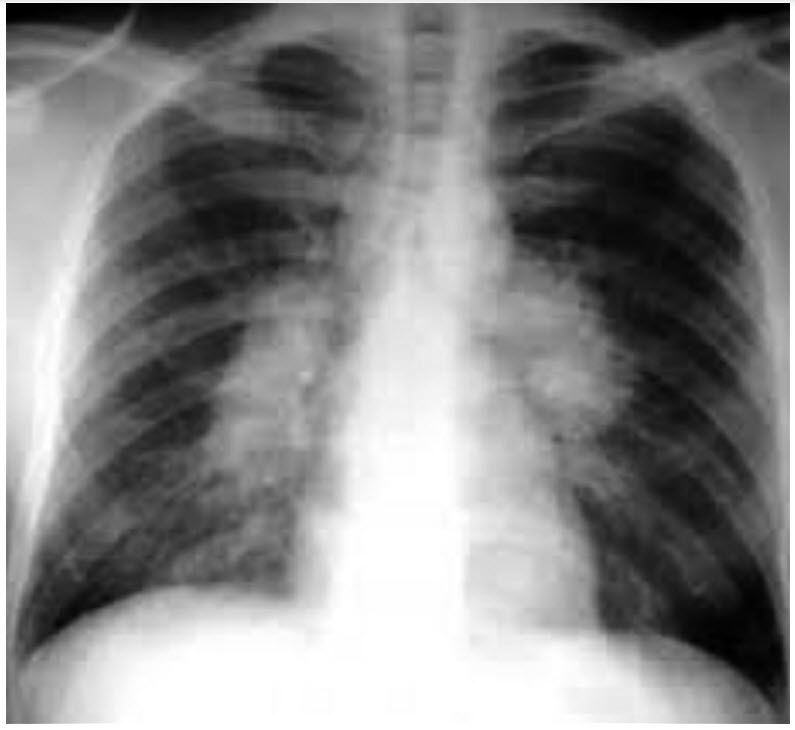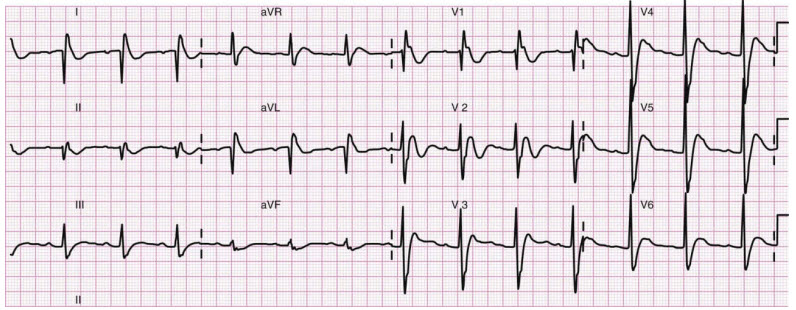Question 2#
A 66-year-old homeless man presents to the emergency department with severe weakness for last few weeks. His vitals are as follows:
- Temperature 36.9°C
- HR 70 beats/min
- RR 22 breaths/min
- oxygen saturation 94% on room air
He is alert and oriented to time and person. The patient denies any specific complaints besides back pain for several days. Routine chest radiograph and ECG are performed:


These ECG changes are most likely explained by:
A. Cold exposure
B. Hyperthyroidism
C. Hypercalcemia
D. Acute coronary syndrome
Correct Answer is C
Comment:
Correct Answer: C
The chest radiograph shows hilar enlargement consistent with sarcoidosis. The ECG shows Osborn waves and, given the presentation above, is most consistent with severe hypercalcemia. Sarcoidosis is known to cause high levels of serum calcium due to the uncontrolled synthesis of 1,25-dihydroxyvitamin D3 by macrophages. 1,25-dihydroxyvitamin D3 leads to an increased absorption of calcium in the intestine and to an increased resorption of calcium in the bone.
Severe cold exposure and acute coronary syndrome can both cause similar ST changes (Osborn waves), but the patient’s temperature on presentation is normal. These ECG changes are not typical of hyperthyroidism.
Reference:
- Otero J, Lenihan DJ. The “normothermic” Osborn wave induced by severe hypercalcemia. Tex Heart Inst J. 2000;27(3):316-317.